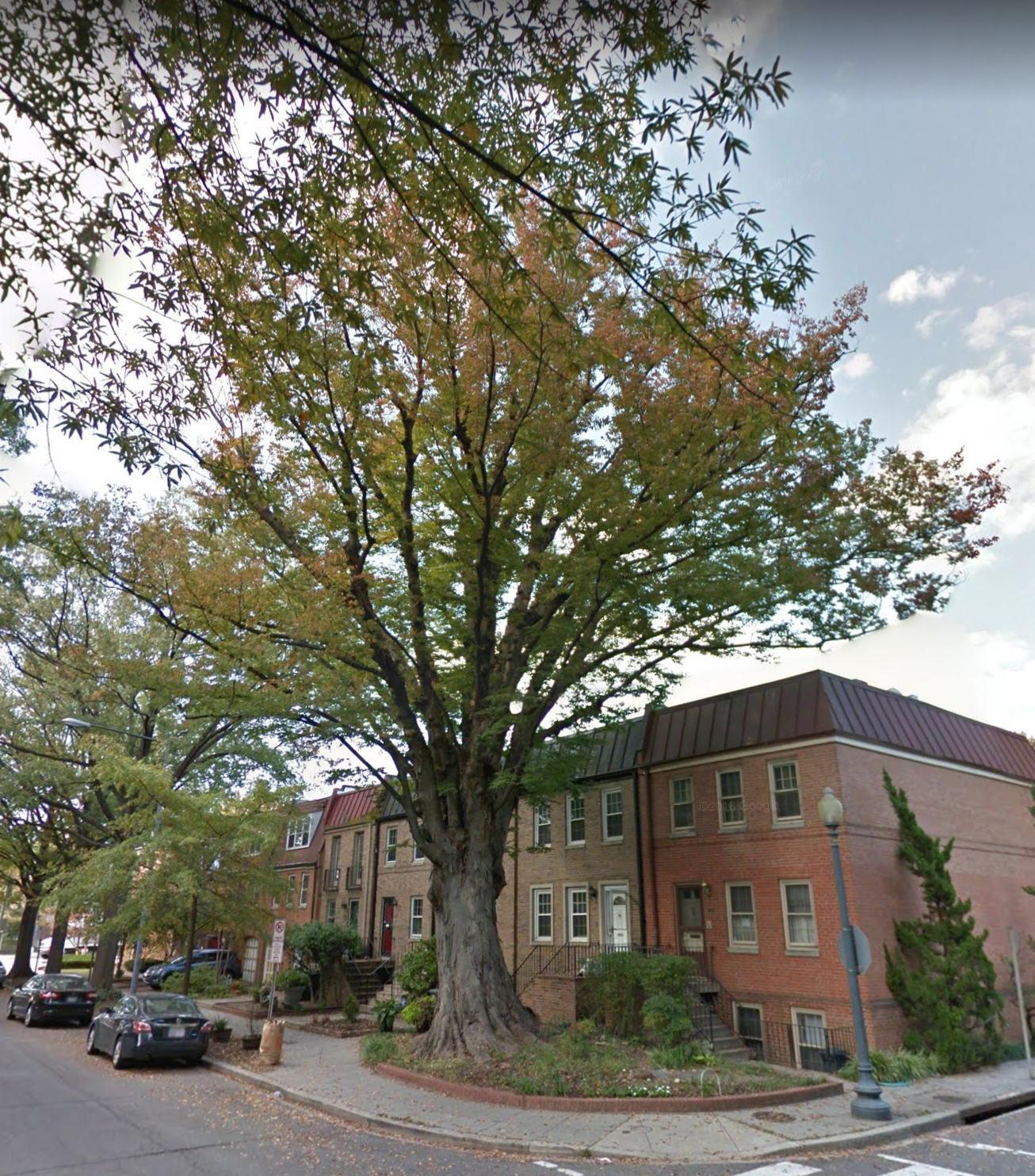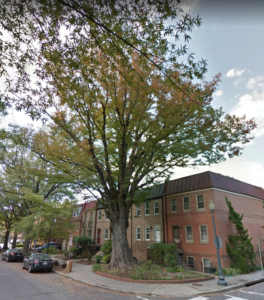

Quite often when new residents stroll around their new home, they remark about one tree in particular. On the corner of 6th Place and G St. SW sits a tree unlike any other in Southwest. The large, towering tree seems wildly out of place, but comforting at the same time.
Grace E. Daughtridge moved back to DC and into her family’s Southwest townhome in 2002. In the front yard of Daughtridge’s home sits a Zelkova serrata, better known as a Japanese elm.
“The 65-foot-tall tree could not have grown to that height since Urban Renewal,” many have remarked. And they are correct. The Japanese elm was one of a handful of things that were spared when the federal government razed Southwest in the late 1950s.
In 2006, Casey Trees listed the Japanese elm as the 11th largest tree in Washington, DC. It is also the largest tree of its species in the District and one of the largest Zelkova trees in the United States.
The exact heritage of the tree sits in neighborhood lore … and research. The most well-known story is that former President Lyndon B. Johnson’s (LBJ’s) wife, Lady Bird Johnson, had a hand in saving the tree after visiting it. (The LBJ Library was unable to confirm that.) The second most recounted story of the elm is that in 1855, Commodore Matthew Calbraith Perry returned from an expedition to China and Japan with saplings and seeds, and this tree originated from those saplings. (The Perry expedition was a diplomatic trip to Japan by two U.S. Navy warships during 1853–54. The expedition was commanded by Commodore Perry, under orders from then–U.S. President Millard Fillmore.)
Daughtridge spent weeks at the U.S. Archives tracing the manifests of the U.S. Navy ships that sailed under Commodore Perry. Her findings: the tax records for the four original owners of the land lots now known as Southwest.
Her research continued in order to help preserve the Southwest treasure. Daughtridge learned that the Martin Luther King Jr. Library held historical pictures of the tree from the 1940s (pre–Urban Renewal). She then met with retired DC employee Hans Johannsen, who is fondly known for his 30 years as the caretaker of trees. He informed her that the tree had national protection. (Street trees are trees located between the curb and sidewalk on all District-owned lands. Currently there are more than 100,000 trees along District roadways.) And in the plot twist of the (multi-) century, Johannsen believes the tree may date as far back as 1776, and possibly even earlier.
We may never know the true origin or age of the beautiful Japanese elm, but we do appreciate it for what it is: another Southwest gem.
By Shannon Vaughn
Editor-in-Chief, The Southwester

